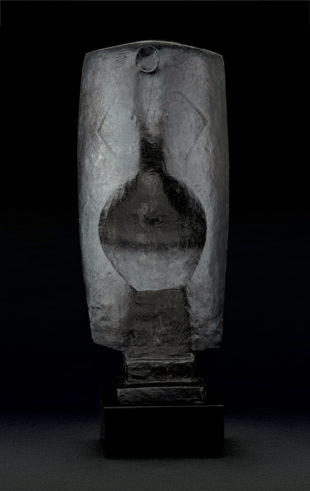Galerie Claude Bernard, Paris
Galerie Alice Pauli, Lausanne
Private collection, since 1984
Paris, Galerie Claude Bernard, Alberto Giacometti: Dessins, November 1975-January 1976, no. 72, ill.
Chicago, Chicago Art Fair, Galerie Alice Pauli, Drawings and Watercolours, 19 – 24 May 1983, no. 23, ill. on brochure
Lausanne, Galerie Alice Pauli, Balthus, Giacometti, Bonnard: Dessins de collections, 17 May – 14 July 1984, no. 25
Andros, Museum of Contemporary Art-Basil and Elise Goulandris Foundation, Alberto Giacometti: sculptures-peintures-dessins, 28 June – 6 September 1992, no. 82, ill. p. 134
Andros, Museum of Contemporary Art-Basil and Elise Goulandris Foundation, Glancing at the Century, 28 June – 20 September 1998, pp. 100-103, ill. p. 103
Alberto Giacometti has always been attracted by the depiction of human head, even though it seemed extremely complicated to him. In fact, there was a period when he stubbornly convinced models posing for him, with the sole purpose of representing their head. Even in his statues and busts, he always insisted on making the head stand out, either by carving the slightest detail or by making it too small compared to the rest of the body. His main concern was to give the head “its exact dimension, the real dimension as it is presented to us”.
For Giacometti, head is what makes a living being, it personalizes it, allows it to fight the void surrounding it. The reproduction of the head on paper, canvas or plaster is therefore an act with which life resists death, a wish to applaud the energy of the living. It is a difficult mission imposed on the artist, who must somehow replace God in order to recreate life. Perhaps because Giacometti had realized this difficulty, among all portraits, his own are the ones recognizable: the intensity of the look and the simplicity of the model’s posture are emphasized so much, that they seem to emerge from the support base. And this is especially true in Portrait I.
Carried out on paper in 1958, this work bears the features of the paintings of that period. The model’s head, presumably Diego’s, Giacometti’s brother, is framed by a margin drawn with pencil; a demarcation designed to draw more attention to what is going on in the work. The artist focuses on the eyes, nose and mouth, which are highlighted by a thicker pencil than the rest of the composition. He believed that facial expression does not go beyond the model’s eyes only: it is the result of a fine balance between all the features that make each individual unique and that no anatomy could ever express. And the realism of the rendering in no way damages neither the understanding of the work nor the emotion it arouses to the viewer.







